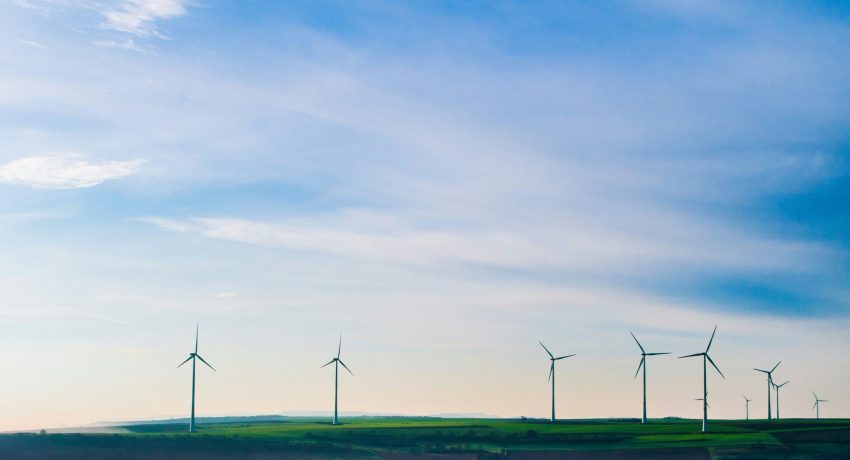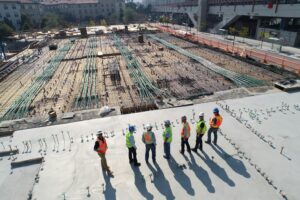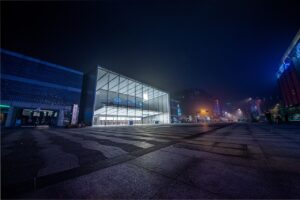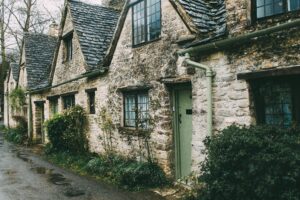How to Improve Energy Efficiency in Older Homes
Understanding the Challenges of Energy Efficiency in Older Homes
Structural Limitations Affecting Energy Efficiency in Older Homes
Many older homes in the U.S. face unique structural challenges that can hinder energy efficiency. Walls and ceilings, for example, often lack the modern insulation materials that are standard in newer construction, resulting in heat loss. Additionally, older electrical infrastructure often cannot support efficient heating and cooling devices, requiring significant upgrades to improve energy efficiency.
Tackling Technical Constraints in Achieving Energy Efficiency in Older Homes
Energy efficiency in older homes is often limited by technical constraints, such as outdated heating and air conditioning systems. These systems, which are often less efficient and more expensive to operate, contribute to higher energy bills and difficulties in maintaining a consistent indoor temperature. Homeowners face the challenge of integrating modern technologies, such as solar panels and smart systems, without compromising the architectural integrity of the building.
Historical Preservation Versus Energy Efficiency Upgrades
Another significant challenge is balancing the historic preservation of older homes with the need for energy efficiency improvements. Historic preservation regulations often limit the ability to alter the façade or overall design of buildings. This can complicate the installation of energy-efficient windows or additional insulation, requiring innovative solutions that respect the historic character while improving energy efficiency.
Effective Strategies to Enhance Energy Efficiency in Older Homes
Enhancing Insulation for Better Energy Efficiency in Older Homes
Improving insulation is crucial for boosting energy efficiency in older homes. Many of these homes lack sufficient insulation, leading to significant heat loss during the winter and heat gain in the summer. By upgrading wall, attic, and floor insulation using modern materials, homeowners can effectively reduce energy consumption and enhance indoor comfort. Moreover, proper insulation minimizes the strain on HVAC systems, reducing overall energy costs and improving environmental footprint.
Window and Door Upgrades for Enhanced Energy Efficiency in Older Homes
Replacing old windows and doors is an effective strategy to enhance energy efficiency in older homes. Traditional single-pane windows and poorly sealed doors often allow drafts, causing heating and cooling systems to work harder. By upgrading to double-pane windows and tightly sealed doors, homeowners can significantly reduce energy loss and improve indoor climate control. These upgrades not only cut down on utility bills but also contribute to a more comfortable living environment.
Implementing Efficient HVAC Systems in Older Homes for Improved Energy Efficiency
Updating the HVAC systems is a pivotal strategy for enhancing energy efficiency in older homes. Older heating and cooling systems tend to be outdated and inefficient, leading to high energy costs and inconsistent temperature regulation. By installing modern, energy-efficient HVAC units, homeowners can dramatically improve energy use and enjoy consistent indoor temperatures. Additionally, integrating smart thermostats allows for better control over energy consumption, further enhancing efficiency and reducing costs.
Cost-Effective Upgrades for Energy Efficiency in Older Homes
Sealing Doors and Windows for Enhanced Energy Efficiency in Older Homes
One of the most cost-effective upgrades for improving energy efficiency in older homes is sealing doors and windows. This simple method can significantly reduce drafts, prevent heat loss, and ensure that heating and cooling systems operate more efficiently. Homeowners can use weatherstripping and caulk to seal gaps and leaks around frames, resulting in substantial energy savings and enhanced indoor comfort without a large upfront investment.
Adopting LED Lighting to Boost Energy Efficiency in Older Homes
Switching to LED lighting is an affordable and impactful way to enhance energy efficiency in older homes. LEDs use significantly less energy compared to traditional incandescent bulbs and have a longer lifespan, which reduces both energy costs and maintenance efforts. By replacing outdated lighting fixtures with LED bulbs, homeowners can achieve better illumination, lower utility bills, and contribute to environmental sustainability.
Integrating Programmable Thermostats for Improved Energy Efficiency in Older Homes
Utilizing programmable thermostats is a smart and cost-effective strategy to improve energy efficiency in older homes. These devices allow homeowners to set heating and cooling schedules that align with their daily routines, minimizing energy use when spaces are unoccupied. By optimizing temperature control, homeowners can achieve significant reductions in energy consumption and costs, making it an accessible upgrade with a quick return on investment.
Assessing and Prioritizing Energy Efficiency Improvements in Older Homes
Conducting Energy Audits for Older Homes
Performing an energy audit is an essential step in assessing energy efficiency needs in older homes. This process involves a thorough examination of the home’s energy usage, identifying areas where energy is being wasted, and offering recommendations for improvements. Professionals use tools like infrared cameras and blower door tests to pinpoint leaks, inadequate insulation, and inefficient systems, providing homeowners with a roadmap to enhance their home’s energy efficiency.
Identifying High-Impact Improvements for Energy Efficiency in Older Homes
Once an energy audit is complete, it’s crucial to prioritize improvements that will have the greatest impact on energy efficiency. This might include upgrading insulation, replacing windows, or updating HVAC systems. Focusing on these high-impact areas can lead to significant energy savings and improved comfort levels, ensuring that investments are made where they will generate the most benefit.
Developing a Strategic Plan for Energy Efficiency Upgrades in Older Homes
Creating a strategic plan for energy efficiency upgrades is vital for prioritizing and executing improvements effectively. This plan should factor in budget constraints, the expected return on investment, and any historical preservation considerations. By systematically addressing the most energy-inefficient aspects of an older home, homeowners can enhance energy efficiency without compromising the home’s character or structural integrity.
Concluding Thoughts on Energy Efficiency in Older Homes
Improving energy efficiency in older homes is a multifaceted endeavor that requires addressing structural, technical, and preservation challenges. By implementing cost-effective upgrades, such as sealing doors and windows, switching to LED lighting, and using programmable thermostats, homeowners can significantly enhance energy efficiency without breaking the bank. Prioritizing high-impact improvements through comprehensive energy audits ensures that efforts yield substantial energy savings and increased comfort. Embracing these strategies not only reduces energy consumption and utility costs but also contributes to a more sustainable future while preserving the unique character of older homes in the USA.






